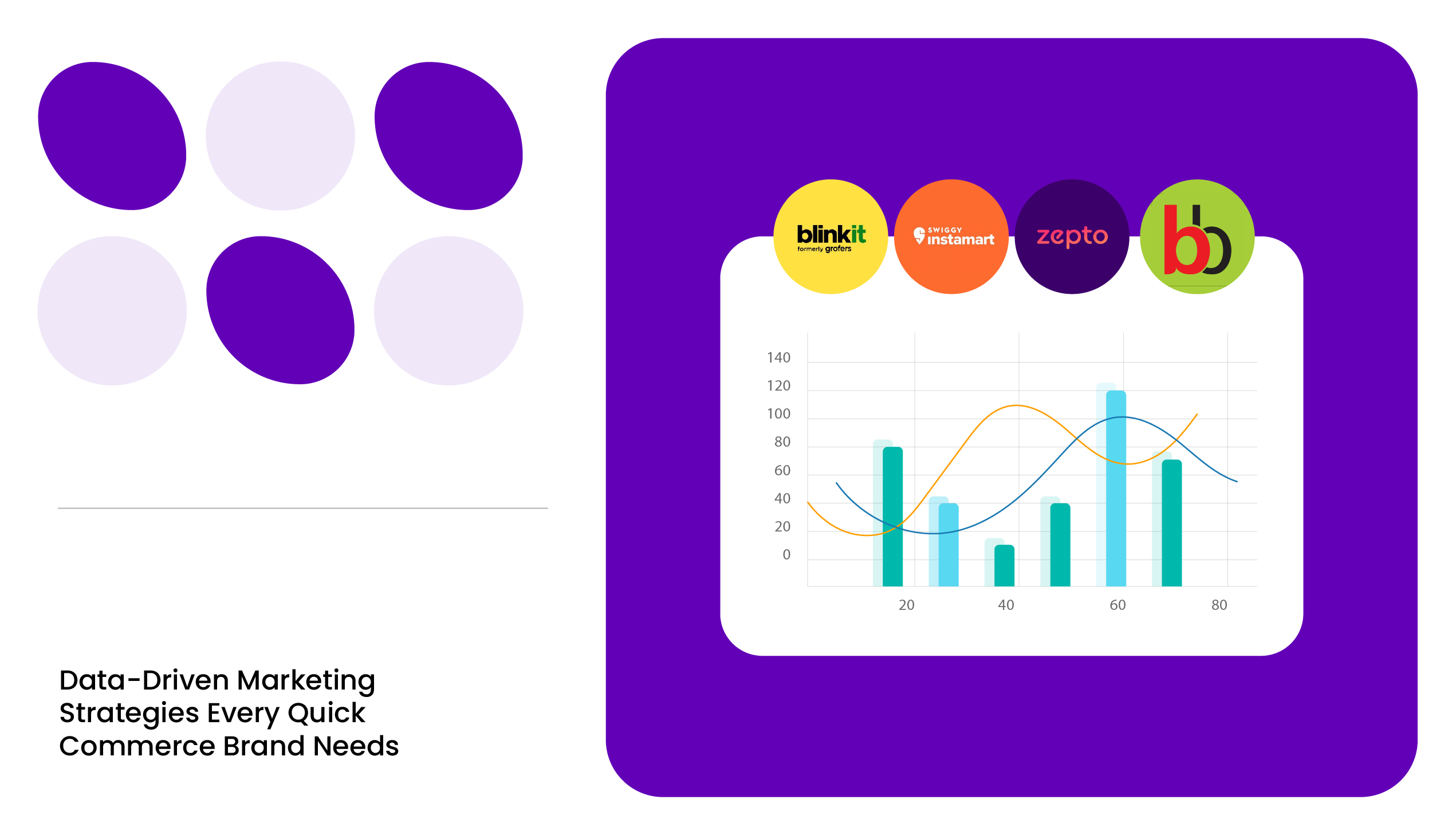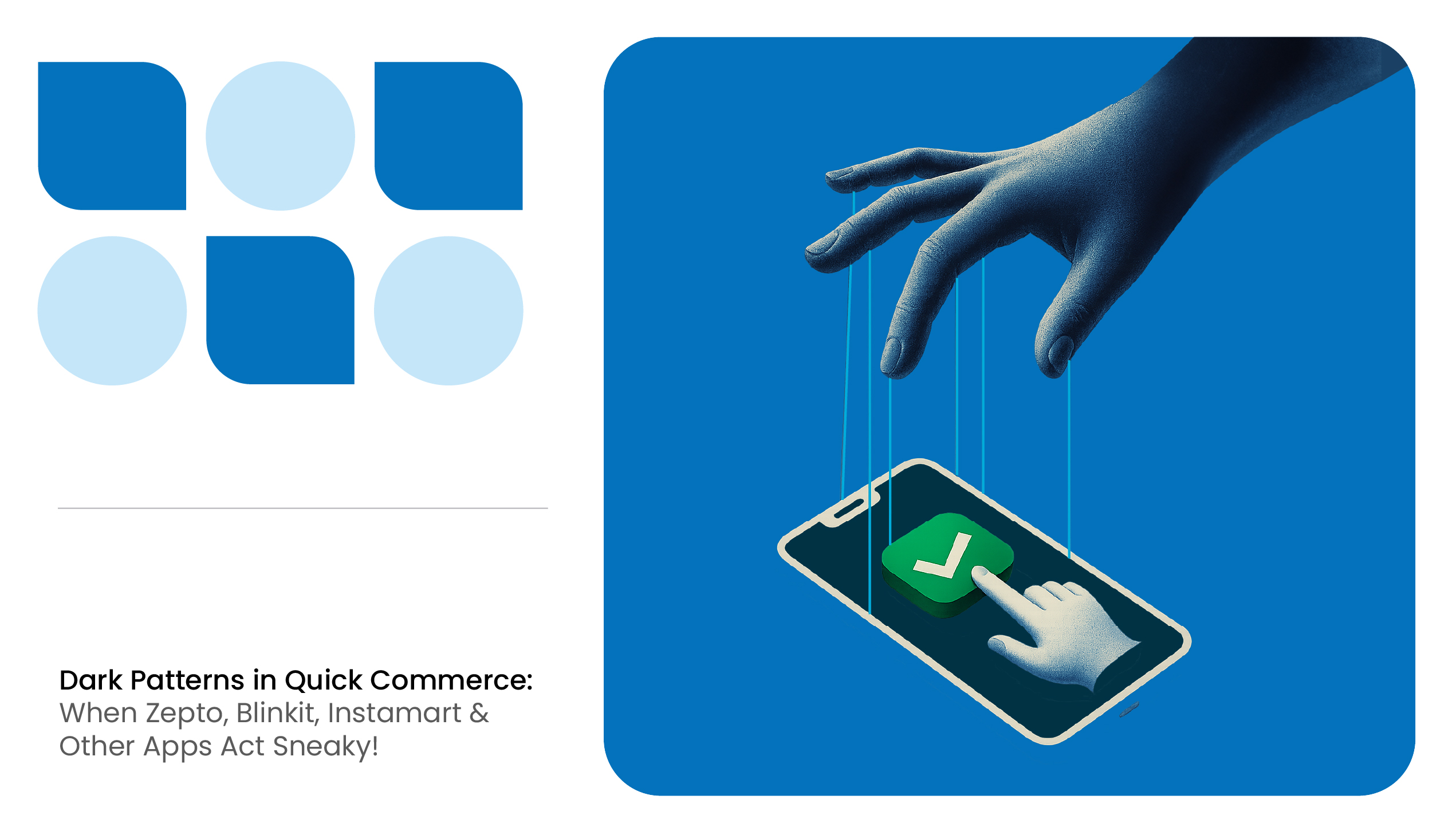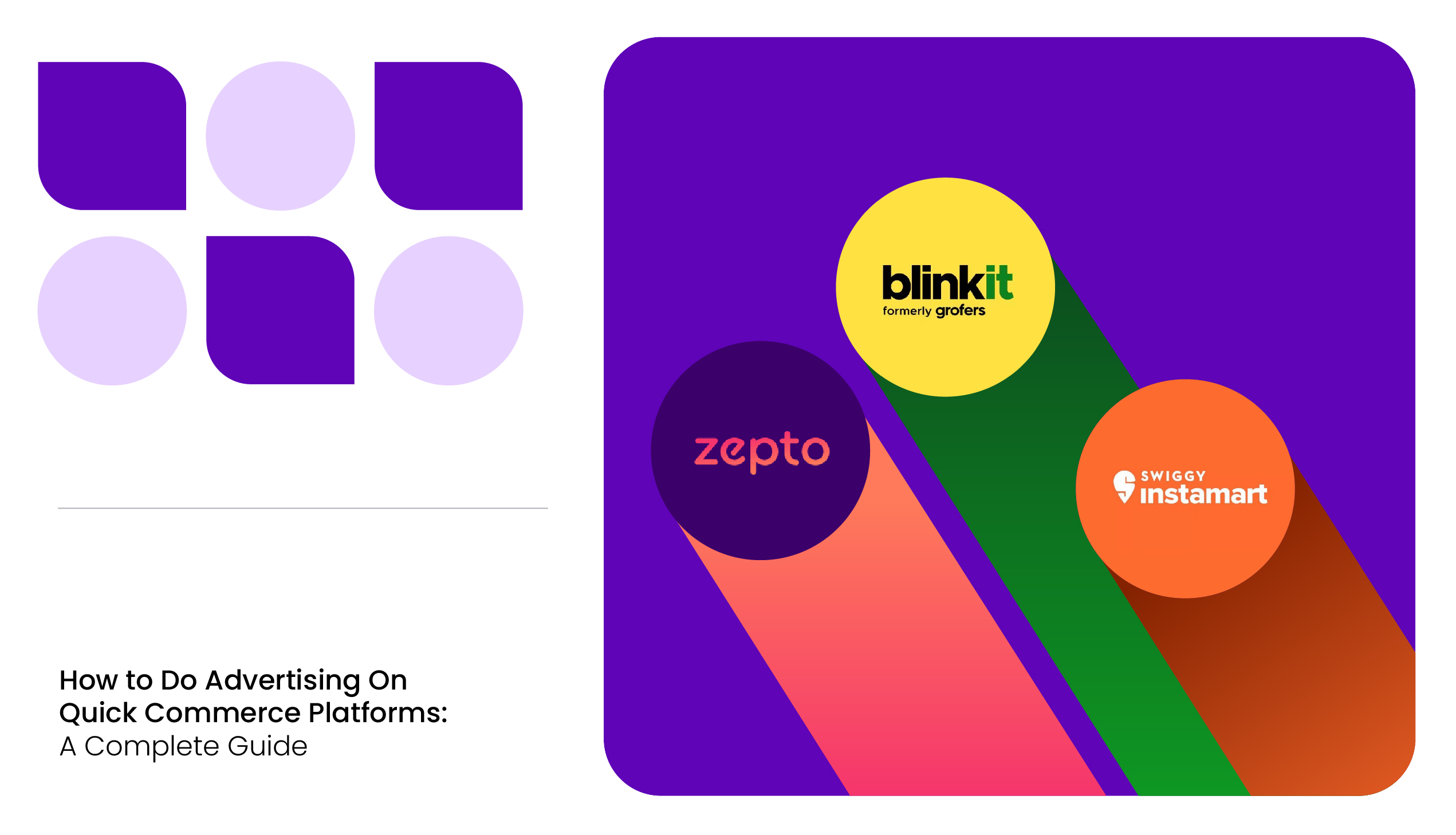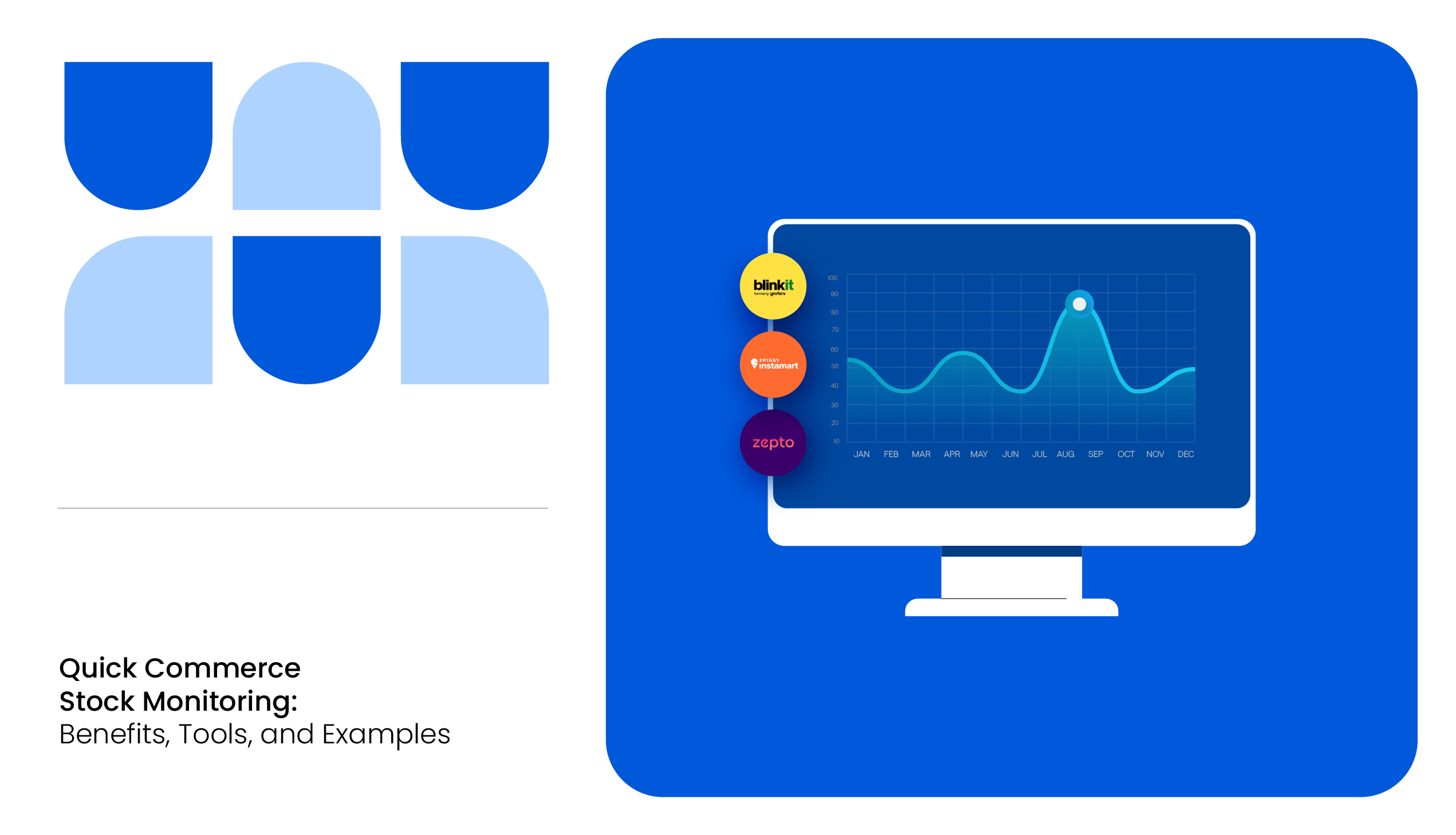Quick commerce has completely changed the way consumers shop, and brands need to adapt to win them. Customers now expect groceries, snacks, and essentials at their doorstep in minutes.
But here’s the thing: in this race, speed isn’t the only advantage. What really sets brands apart is how data-driven their marketing is.
If you’re managing a brand on platforms like Blinkit, Zepto, or Instamart, you know the challenge all too well: how do you make sure your product is the one customers actually see, click, and buy? That’s where data comes in.
By tracking share of search, keeping an eye on competitor pricing, and spotting demand trends before they peak, data helps brands turn quick commerce from a logistical challenge into a growth opportunity.
In this blog, we’ll explore the key metrics and data-driven quick commerce marketing strategies every brand needs to drive faster decision-making and higher sales.
Key Data-Driven Metrics for Quick Commerce Marketing
To effectively market on quick commerce platforms, specific metrics are mission-critical. These data points let you monitor performance and react quickly:
- Real-Time Pricing Data: You need to continuously track your product prices and competitor prices across platforms. If a rival slashes their price or if your product is no longer the cheapest option, it allows you to reposition pricing immediately.
- Stock Availability Rates: You must monitor your on-shelf availability (the percentage of dark stores where your item is in stock)and out-of-stock occurrences. Inventory data by location is vital in hyper-local quick commerce; if a product is out of stock in even one micro-fulfillment center, you lose potential orders in that area.
- Share of Search: Measure your brand’s visibility in search results on the platform. A low share of search warns you that competitors are outranking you in visibility, suggesting you may need to improve content or invest in promotions to boost your search ranking.
- Demand Trend Indicators: Monitor data that reveals emerging trends. This can include search query frequency, sales velocity changes, or even external factors like weather or local events impacting demand. Identifying spikes or drops early allows you to forecast product demand and adjust marketing plans proactively.
- Promotion Performance Metrics: When you run quick commerce promotions (like a limited-time discount or bundle deal), track the real-time performance, click-through rates, conversion rates, and sales lift from the campaign. It helps optimize or pivot your promotional strategy quickly.
By closely tracking these key metrics, brands gain a live pulse of their quick commerce business.
READ MORE | Want to Know How Data-Driven Brand Strategy Works in E-Commerce? Check out Data Driven Brand Strategy for E-Commerce: The Smart Way To Win Customers
Next, we’ll see how leveraging these data points translates into benefits and strategies for marketing initiatives.
Benefits of Data-Driven Quick Commerce Marketing
Harnessing data in real time isn’t just about watching numbers; it enables quick commerce brands to act fast and smart. Here are five essential data-driven quick commerce marketing strategies every brand should use:
Optimize Product Availability In Real-Time
Quick commerce moves fast – if you’re out of stock in a local dark store, shoppers will simply buy a rival product. By integrating data from various sources like point-of-sale systems, supply chain data, and customer orders, businesses can maintain optimal stock levels in dark stores.
When the data flags low stock or a stock-out, brands can rush to replenish before sales are lost. By using real-time alerts, brands make sure the right products stay in stock at the right locations, preventing missed opportunities.
Launch Targeted & Timely Promotional Campaigns
With city-level SKU insights, brands can tailor campaigns targeting specific locations or customer segments and timing them for maximum impact. By analyzing past purchase behaviors and browsing patterns, businesses can offer personalized product recommendations and targeted discounts to customers.
For instance, if data shows that snack orders spike on weekend nights, a snack brand can launch a Friday evening promo for quick commerce shoppers. This helps base promotions on actual shopper behavior and platform trends, enhancing engagement and conversion rates.
Forecast Trends And Product Demand
Data-driven quick commerce marketing isn’t only reactive, it’s also forward-looking. By analyzing historical sales patterns and real-time trends, brands can forecast demand more accurately.
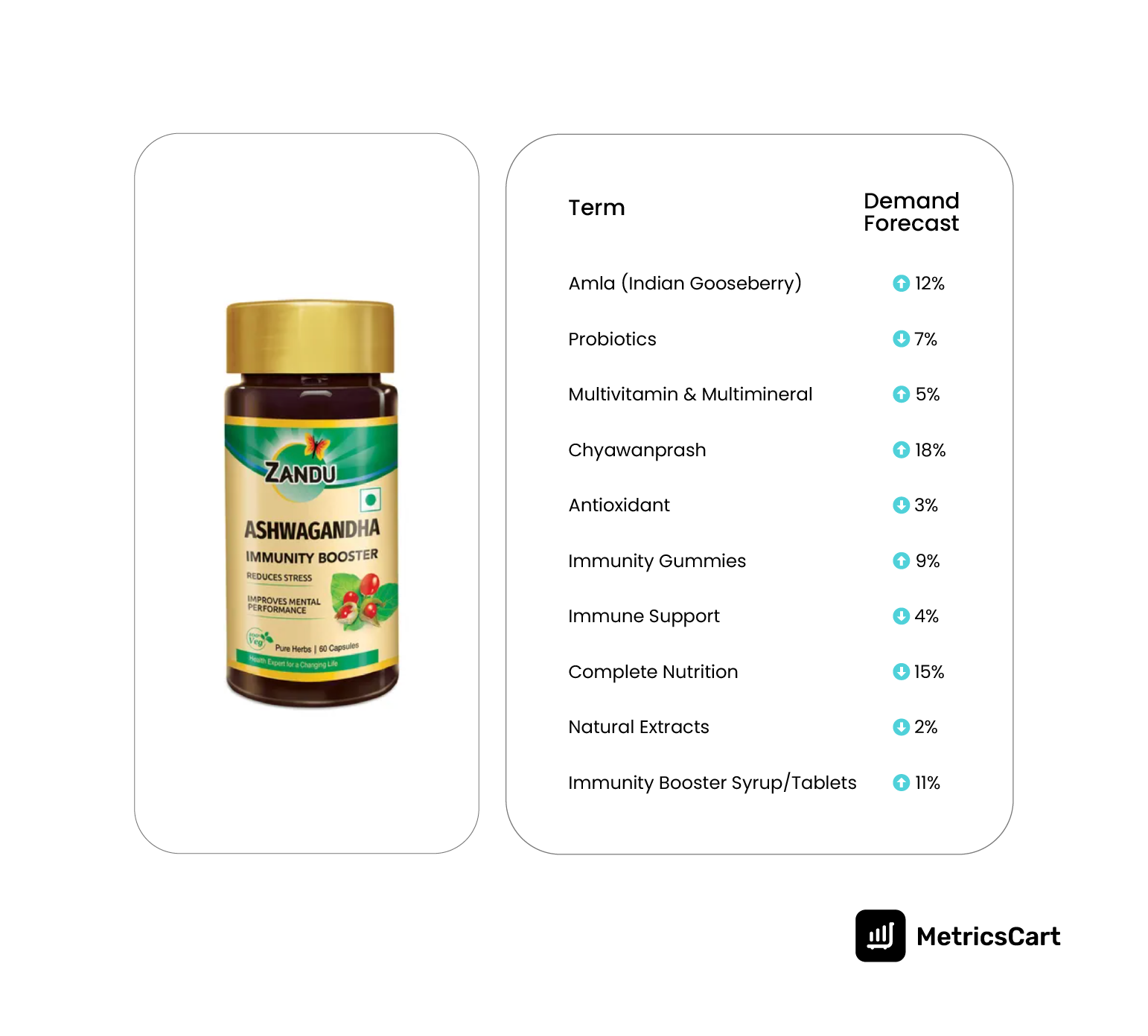
For example, if searches for “immunity boosters” are climbing week over week, a beverage brand can anticipate increased demand for vitamin drinks and ramp up production or marketing around those.
This allows brands to be prepared for what shoppers will want next, leading to better stock planning and marketing campaigns that align with consumer needs. This minimizes out-of-stock issues and ensures you capitalize on emerging trends ahead of competitors.
Enhances Customer Loyalty
In quick commerce, retaining customers is just as vital as acquiring new ones. When brands analyze customer interactions across multiple touchpoints, such as reviews, purchase history, and engagement data, they can gain a granular view of their preferences.
This allows businesses to anticipate customer needs and develop loyalty programmes and marketing strategies that resonate with their audience, encouraging repeat purchases and fostering long-term relationships.
Boost Share Of Search
With so many products on quick commerce apps, being easily discoverable is crucial. A data-driven approach helps boost your “digital shelf” presence.
Monitoring your share of search and keyword rankings helps identify gaps in the content and improve them, such as optimizing product titles/descriptions, adding popular search keywords, or investing in sponsored product ads for key terms.
In addition, on episode 23 of the Digital Shelf Insider Podcast, Yashida Shah discusses the strategies for brands and platforms to succeed in this ultra-fast, high-pressure segment.

Watch full episode:
Allocating budgets to the right keywords and categories ensures that brands gain visibility and sustainable sales growth.

How Brands Win with Data-Driven Quick Commerce Marketing
Brands that fully embrace data find they can outmaneuver competitors and capture more market share by acting on information faster. For example, consider a personal care brand on Blinkit: through live analytics, they notice a rival’s best-selling shampoo keeps going out of stock in certain cities.
Seeing this trend, the brand quickly increases stock of its shampoo in those same areas and launches a targeted promo for those zip codes. The result? They capture all the pent-up demand and see their sales surge, simply by leveraging data that their competitor wasn’t acting on. This kind of quick, informed decision would be impossible without a real-time data feed.
Companies that adopt data-driven quick commerce marketing can significantly increase ROI.
In quick commerce, where things move even faster, the payoff of being data-driven can be seen much sooner. Brands achieve higher conversion rates, better promotion ROI, and greater sales lift because they’re constantly tuning their tactics based on what the data shows. Marketing spend goes further when directed by real customer and market insights, rather than hunches.
Achieving these wins at scale requires the right tools. This is where MetricsCart comes in as the go-to solution for quick commerce analytics.
MetricsCart’s platform provides a unified, real-time dashboard for all your critical data – from pricing and competitor monitoring to inventory status and search ranking. Instead of juggling spreadsheets or manually checking apps, you have live insights in one place.
READ MORE | Struggling to Build a Brand on Quick Commerce? Check out How to Build a Brand on Quick Commerce: A Step-by-Step Guide for E-Commerce and Brand Teams
Conclusion
Quick commerce moves fast, and if your marketing can’t move faster, you’ll always be playing catch-up. The good news? Data gives you the advantage. When you turn real-time signals into clear actions, q-commerce stops being a scramble and starts being a predictable growth channel.
That’s precisely what MetricsCart Quick Commerce dashboards are built for. They pull live pricing, share-of-search, inventory, and promo signals into one place, identify the gaps that matter, and trigger the alerts or actions your team needs, from inventory flags to high-intent keyword opportunities.
When every decision – from pricing tweaks to campaign launches – is backed by real insight, you’ll see the results in faster growth and higher sales. Quick commerce brands that wield that power are already winning today, and they’re set up to thrive in the exciting, fast-moving years ahead.
Want To Win Over Quick Commerce Shoppers?
FAQs
Data-driven quick commerce marketing refers to using real-time data and analytics to guide all marketing decisions on quick commerce platforms. Instead of making guesses or following static plans, brands rely on up-to-the-minute insights to optimize their strategy.
Data drives quick commerce sales by pinpointing exactly where a brand can improve and by enabling immediate action. Data can also show which promotions are working so marketers can refine offers on the fly to increase conversion. Additionally, real-time insights into competitor pricing or consumer search trends allow a brand to respond swiftly, leading to more sales.
Brands should track a variety of metrics to succeed in quick commerce. Key ones include: price competitiveness, on-shelf availability, share of search, sales velocity, and promotion performance.
Data allows brands to implement dynamic pricing strategies in quick commerce. By continuously monitoring competitor prices, sales volume, and price elasticity, a brand can find the sweet spot for pricing its products.
A data-driven brand strategy for quick commerce is a plan where every major decision is informed by data insights from quick commerce platforms. This strategy involves shaping your overall approach (assortment, marketing, operations) based on the numbers.

